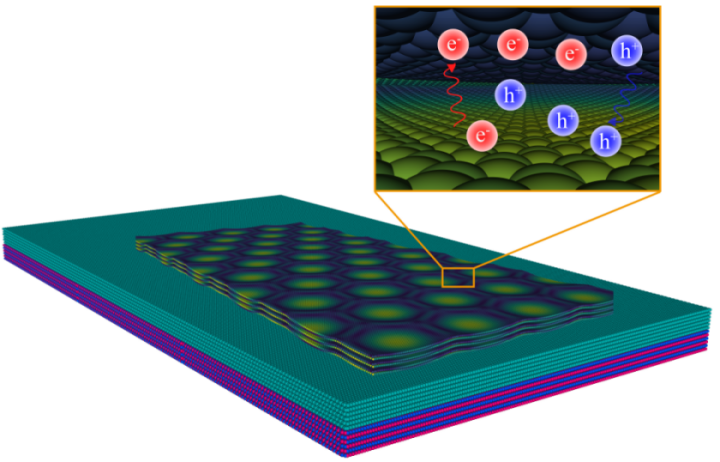Non-Equilibrium Dynamics of van der Waals Interfaces
Research Background
Van der Waals interfaces, innovative structures composed of low-dimensional materials, exhibit extraordinary physical and mechanical properties. Extensive experimental and theoretical studies have revealed that these properties are intimately linked to non-equilibrium, strongly correlated physical phenomena at the interface. These phenomena encompass, but are not limited to, electron-phonon coupling, force-electric coupling, and strong interactions between interlayer excitons and carriers. Remarkably, these strongly correlated physical phenomena can be precisely modulated through various methods, including electrostatic tuning, interlayer twisting, strain engineering, and substrate design. This unprecedented tunability opens up a wealth of possibilities for engineering design and manipulation based on van der Waals structures. Consequently, it holds the potential to catalyze groundbreaking advances in novel electronic devices, energy conversion systems, and sensing technologies.
Van der Waals interfaces, innovative structures composed of low-dimensional materials, exhibit extraordinary physical and mechanical properties. Extensive experimental and theoretical studies have revealed that these properties are intimately linked to non-equilibrium, strongly correlated physical phenomena at the interface. These phenomena encompass, but are not limited to, electron-phonon coupling, force-electric coupling, and strong interactions between interlayer excitons and carriers. Remarkably, these strongly correlated physical phenomena can be precisely modulated through various methods, including electrostatic tuning, interlayer twisting, strain engineering, and substrate design. This unprecedented tunability opens up a wealth of possibilities for engineering design and manipulation based on van der Waals structures. Consequently, it holds the potential to catalyze groundbreaking advances in novel electronic devices, energy conversion systems, and sensing technologies.
However, a significant challenge in current research is the absence of efficient computational methods and theoretical models capable of accurately describing the non-equilibrium dynamic processes of large-scale van der Waals interfaces. This deficiency severely constrains our understanding and predictive capabilities for these systems, impeding the provision of effective theoretical guidance for experimental research. Therefore, developing advanced computational methods and theoretical models is crucial. Such advancements are not only vital for propelling fundamental scientific research on van der Waals interfaces but also for providing essential support for the practical application and commercialization of related technologies. This interdisciplinary effort promises to bridge the gap between theoretical understanding and real-world implementation, potentially revolutionizing multiple technological domains.
Research Content
i)Develop efficient computational methods to accurately describe non-equilibrium dynamic processes at van der Waals interfaces, including force-electric coupling, electron-phonon coupling, and other collective phenomena;
ii)Establish theoretical models to elucidate the mechanisms underlying these dynamic processes at van der Waals interfaces;
iii)Create an open-source software package optimized for efficient parallel computation, facilitating large-scale simulations and analysis, serving the relevant scientific community, and encouraging broad collaboration.
i)Develop efficient computational methods to accurately describe non-equilibrium dynamic processes at van der Waals interfaces, including force-electric coupling, electron-phonon coupling, and other collective phenomena;
ii)Establish theoretical models to elucidate the mechanisms underlying these dynamic processes at van der Waals interfaces;
iii)Create an open-source software package optimized for efficient parallel computation, facilitating large-scale simulations and analysis, serving the relevant scientific community, and encouraging broad collaboration.



